All models of washing machines presented on the modern market can be divided into two large categories: vertical and front-loading. They differ quite significantly, but each has its pros and cons. Let's try to answer the question of which washing machine is better: with front or vertical loading. We will take them literally “to the bone” and help to dispel all doubts once and for all.
What are the differences, how are they arranged
So how do you know which is better: a top-loading washing machine or front-loading? For this, first of all, it is necessary to find out how they are arranged and how they differ from each other.
Frontal "washer"
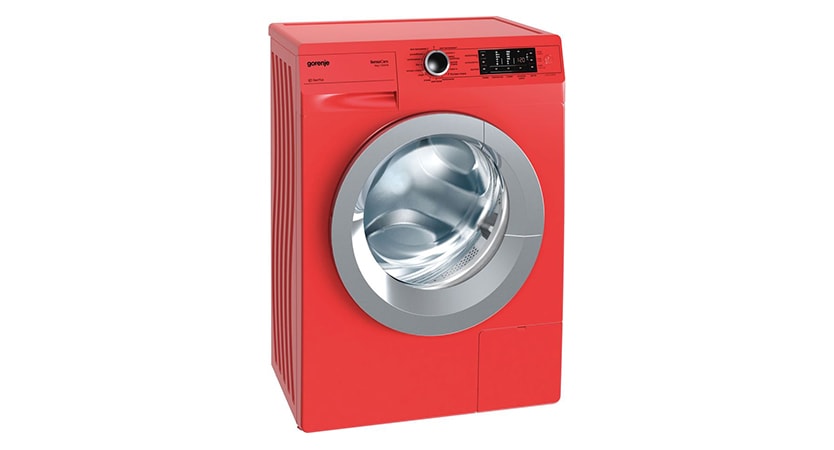
The main difference between different types of units is the location of the loading hatch. At the front-end, it is located in the center of the front wall and opens to the side. It is very convenient to load linen into it, since the door opens at an angle of up to 180 degrees.
When the washing program is turned on, the loading hatch is blocked with an electronic lock, which prevents accidental opening. Unlocking occurs only after the end of the selected program or when the machine is completely disconnected from the network.
To prevent water from pouring out during washing, a dense cuff is placed on the loading hole. It is made of thick rubber and will last a very long time.
The control panel is usually located at the top of the front panel. It can be a touch device or ordinary buttons.
The washing process in frontal cars can be observed. For this, the doors of almost all models are made of durable glass. This is very convenient, because if a foreign object gets into the machine, it can be noticed in time and removed at the initial stage of washing.
New models of front-loading washing machines can hold up to 12 kg of laundry. This is due to the design and location of the drive mechanism. Another plus of such "washers" is the presence of a large number of various functions. Some models have an integrated drying system.
disadvantages:
- In order to put the laundry in the drum or get it out of there, you have to sit down or bend down. For those with back or joint problems, this can be a problem.
- It will not be possible to report things to the front-loading washing machine if the process is already running.Such an opportunity is provided only by some manufacturers, by integrating a special window into the hatch.
Vertical loading type
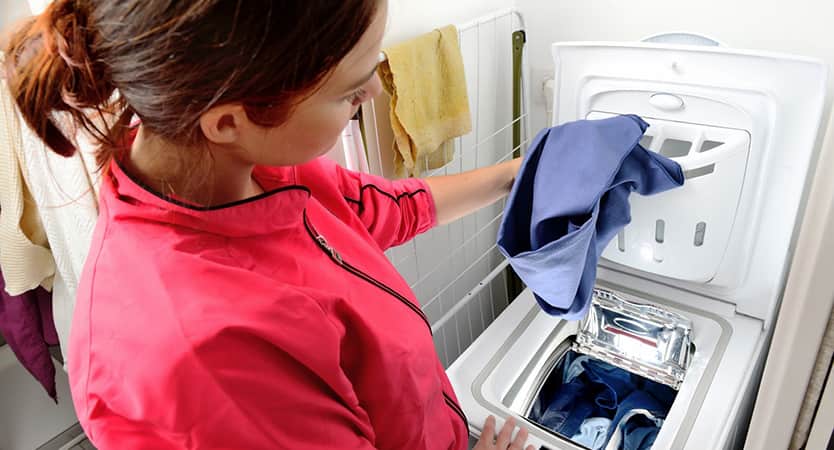
In automatic machines of this type, the hatch for loading linen is located at the top. A horizontal drum is installed under it, which, in turn, has a door with a conventional mechanical lock.
During the washing process, you can add items that, for some reason, could not be loaded right away. However, it will not be possible to observe the process, everything is covered with opaque panels.
The control system is located on the top panel, and on some models on the side.
Almost all new "washers" are equipped with a drum parking function. This means that after the end of the process, the loading door will stop exactly opposite the top cover and you can freely get out the laundry.
The drive mechanism of such machines will last much longer, and the bearings will have to be changed less often. In addition, due to the special arrangement of the counterweights and shock absorbers, the vertical unit is considered more stable.
disadvantages:
- Older models do not control the stop of the drum, so sometimes you have to turn it by hand.
- The vertical drum is less capacious. It is difficult to find a machine on the market that can simultaneously wash more than 5–7 kg of laundry.
- It is almost impossible to find a vertical washing machine that has a drying function. And the choice of other washing options in them is also limited.
![]() See also - Advantages and disadvantages of washing machines with a water tank
See also - Advantages and disadvantages of washing machines with a water tank
Dimensions: how much space does it take?
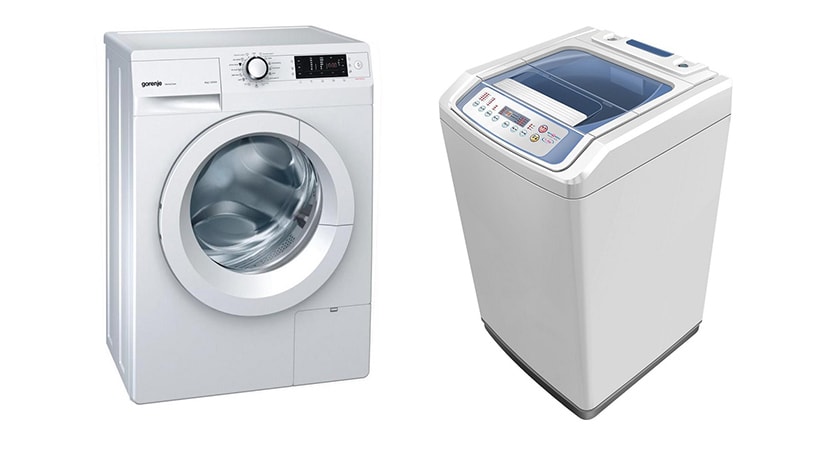
Since bathrooms in modern apartments are not too large, many are concerned about saving space.
If every centimeter is dear to you and there is no more than half a meter to install the machine, then the best solution would be to purchase a vertical version. The dimensions in this case are practically independent of the manufacturer's choice and other parameters. 98% of the machines are 40 cm wide, 55-60 cm deep and 80 to 90 cm high. So this unit can be placed even in the narrowest and smallest bathroom. The only thing that you won't be able to do is to make the technique built-in, because the lid opens from the top.
Note! Many vertical "washing machines»Have special wheels. With their help, the equipment can be easily moved to the desired place..
Front-end models are more variable in this regard. In stores you can find a variety of models from very narrow to full-size. A wide variety of built-in appliances are also available. For those who approach the issue of saving space radically, special wall models are offered.
The top panel of front-loading washing machines often acts as a shelf. You can place toiletries or a stack of clean towels there. The main thing is to install the equipment so that it does not vibrate during washing.
When choosing a front-loading "laundress", you should understand that to install it you need a niche, about 60-65 cm wide and 35 to 60 cm deep. At least half a meter of unoccupied space will have to be left in front of the machine, otherwise you simply cannot open the hatch.
Which is more convenient to use
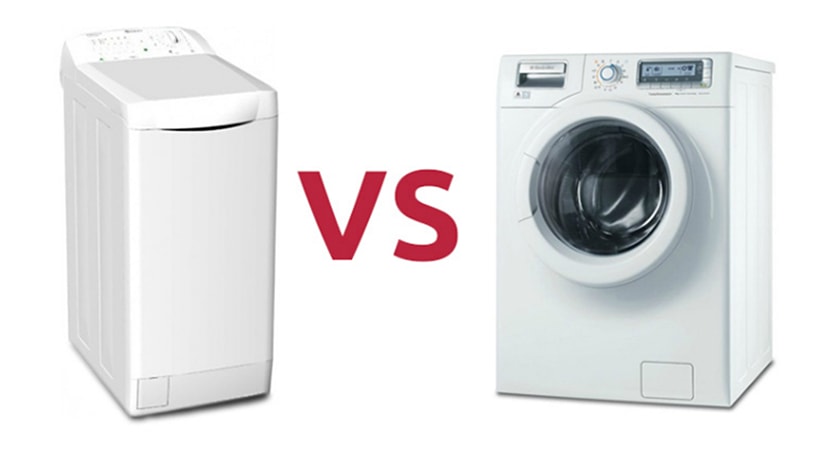
The answer to this question can be highly subjective. If the washing machine in your home is located in the kitchen, then it is better to prefer the built-in front version. So you get one more additional work surface, and the machine will organically fit into the interior.
If you want to save space and do not have a lot of "maneuver" space, it makes sense to purchase a "vertical". It can be moved almost close to the wall, while turning it either sideways. And you will not need a place to open the hatch, because it is located on top. But on the other hand, the vertical type of the machine cannot be adapted for an additional shelf; nothing can be put on the top cover.
Another criterion for determining which machine is right for you is the location of the powder receiver. Vertical variants most often have a cuvette located under the lid. This is not always convenient. If you have never had such a "washing machine", at first you will have to adapt. Horizontal models have a more convenient container for detergents. It is located on the left side of the front panel and looks like a small drawer. By the way, you can take it out completely and wash it thoroughly.
Design and maintainability
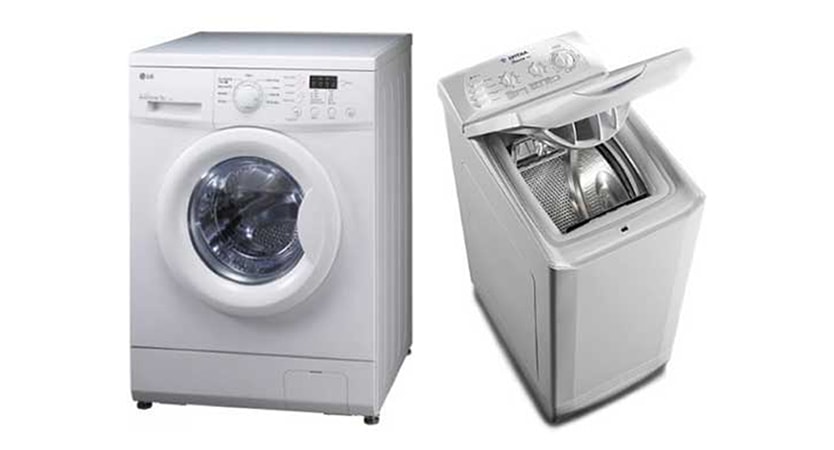
If you are not limited by the size of the space, then from the point of view of visual appeal, horizontal "washers" have a definite advantage. On store shelves, you can find such a variety of design solutions that your eyes just dazzle. Here you can choose not only the standard "boxes" of white color, but also bright multi-colored models that resemble a spaceship when launched.
Vertical machines are practically indistinguishable from each other. And their choice of models is much narrower.
Important! Among all models on the domestic market, only 15% have a vertical loading type.
Now let's talk about maintainability. There is an opinion that vertical units "jump" less during operation. It's not like that at all. It all depends on how correctly your "home assistant" was installed. If the unit is leveled, vibration will be minimal.
It is impossible to say unequivocally that this or that technique breaks down more. The design of the machines is almost the same, and almost all breakdowns arise from excessive vibration. According to experts, this factor strongly depends on the dimensions of the unit. The smaller the machine, the more it vibrates during operation. Accordingly, its service life will not be so long.
Need to know! Top-loading washing machines break down more often and cost more to repair.
This is due to the design features. For "vertical blocks" all internal nodes are located as close to each other as possible. This means that increased vibration affects all nodes at the same time, being transmitted from one to another.
A significant disadvantage of many top-loading washing machines is the inner drum doors. Often users forget to close them tightly enough, which leads to the belt breaking. Sometimes it happens that the flaps open on their own when spinning at high speeds. If this happens, the breakdown can be very serious and the repairs are terribly expensive.
If we take into account the factor of reliability, then there are no special differences. Both those and others are able to serve their masters for a long time. But if repairs are needed, it will be much easier to find spare parts for units with side loading. And the masters of service centers are usually better versed in just such models.
Attention! When buying any type of washing machine, make sure that there is a certified service center in your community. Otherwise, for warranty repairs, you will have to send the "washerwoman" to another city.
Which is more expensive and why
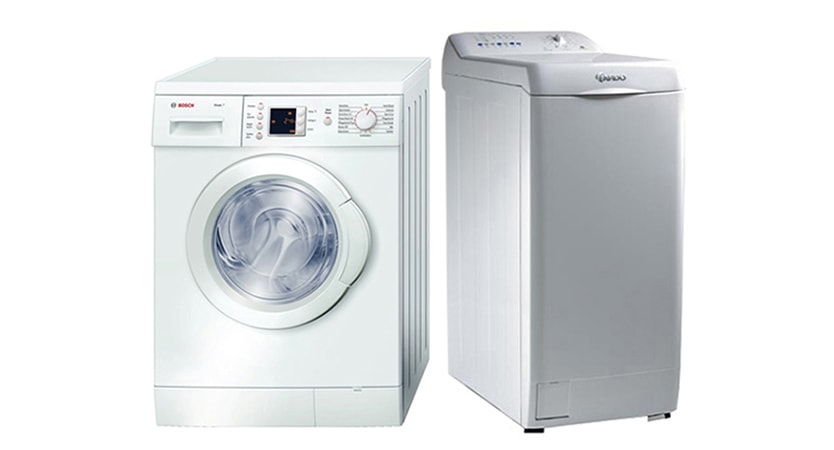
According to the manufacturers themselves, vertical washing units are somewhat more expensive to assemble. This means that the price tag in the store will not please them either. It seems that this is due not only to the rise in production costs, but also to the fact that the demand for such models is much lower. There is practically no competition in this sector, which means that you can set any price. Who needs just such a compact version will buy it anyway.
But does the increased cost mean that vertical washers will last longer? Unfortunately no. The quality of washing will also not depend on the type and location of the loading door. So whether it is worth overpaying or not, everyone must decide for themselves.
Output
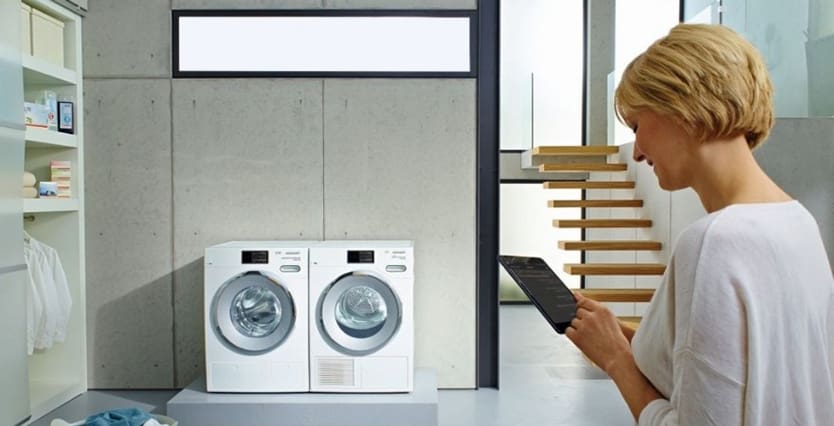
After analyzing everything that has been said above, we can safely say that purchasing a washing machine with an upper hatch position is justified only if you need total space savings. In all other cases, the choice of such a technique can only be justified by the habit and personal preferences of the hostesses.
See also:

